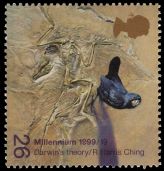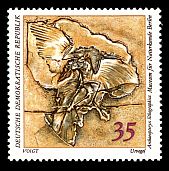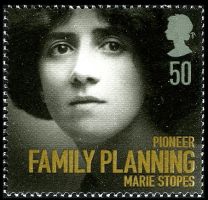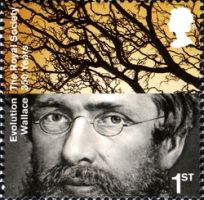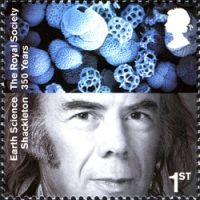the place where Paleontology and Paleoanthropology meets Philately
United Kingdom (UK) / Great Britain (GB)
Dinosaurs and other prehistoric animals, fossils, Charles Darwin, paleontologists, Natural History Museums, contributors to Paleontology and Paleoanthropology on stamps and postmarks of the United Kingdom
| << previous country | back to index | next country >> |
Contents:
- Country overview
- Philately of the United Kingdom
- Official stamps of United Kingdom related to Paleontology and Paleoanthropology
- Some other stamps of the United Kingdom to consider
- Commmemorative postmarks and meter frankings of the United Kingdom related to Paleontology
- Some other postmarks and meter frankings of the United Kingdom to consider
- Special Covers
- References
- Acknowledgements
The United Kingdom of Great Britain and Northern Ireland, commonly known as the United Kingdom (UK) or Britain, is a sovereign country in western Europe. Lying off the north-western coast of the European mainland, the United Kingdom includes the island of Great Britain, the north-eastern part of the island of Ireland and many smaller islands. Northern Ireland is the only part of the United Kingdom that shares a land border with another sovereign state-the Republic of Ireland.
The country had an area of 242,500 square kilometres with an estimated population of 65.1 million inhabitants. The United Kingdom is a constitutional monarchy with a parliamentary system of governance. The capital of the United Kingdom and its largest city is London, a global city and financial centre with an urban area population of 10.3 million. [R1]
The postal history of the United Kingdom is notable in at least two respects - first, for the establishment of an efficient postal system throughout the British Empire, laying the foundation of many national systems still in existence today, and secondly for the introduction of adhesive postage stamps.
 |
 |
| "Penny Black" and "Two Pence Blue" are the first stamps in the world, issued in UK in May 1840 | |
The first stamps in the world did not need to show the issuing country, therefore no country name was included on them. Today the United Kingdom remains the only country to omit its name on postage stamps, the country name is represents by the present monarch's head which us always faces left into the envelope. Interesting is, the image of the monarch's head on the coins is normally reversed from one monarch to the next.
In total over 68 million "Penny Blacks" stamps were produced. The estimated survival rate of around 2% makes the "Penny Black" to be not a particularly rare stamp.
Beginning in 1958, regional issues were introduced in the Channel Islands, the Isle of Man, Northern Ireland, Scotland and Wales. While these issues are only sold at post offices in the respective countries, the Northern Irish, Scottish and Welsh issues are valid throughout the United Kingdom. The Channel Islands (since 1969) and Isle of Man (since 1973) now issue their own stamps which are not valid anywhere else. [R2]
 For every set of commemorative stamps Royal Mail issues multiple commemorative postmarks
in addition to a non-pictorial "First Day of Issue" postmark.
FDC with some of these pictorial-commemorative postmarks can be purchased in online-store of Royal-Mail as clean or addressed.
Addressed FDC sent to recipient inside of another envelope, perhaps to protect the FDC from any damage
underway. Due to this reason there are almost no addressed FDCs with additional postal cancelations
or traces of letter sorting machine on it, as it all left on the extra envelope.
For every set of commemorative stamps Royal Mail issues multiple commemorative postmarks
in addition to a non-pictorial "First Day of Issue" postmark.
FDC with some of these pictorial-commemorative postmarks can be purchased in online-store of Royal-Mail as clean or addressed.
Addressed FDC sent to recipient inside of another envelope, perhaps to protect the FDC from any damage
underway. Due to this reason there are almost no addressed FDCs with additional postal cancelations
or traces of letter sorting machine on it, as it all left on the extra envelope. 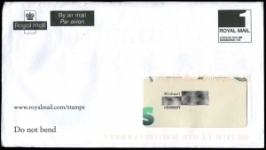 |
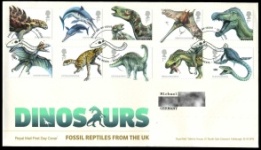 |
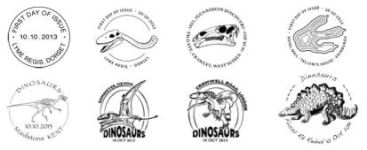 |
| Addressed FDC of Royal Mail sent inside of another envelope. | Addressed FDC of Royal Mail with Dinosaur stamps from 2013. | Various commemorative postmarks used on FDC of Dinosaur stamps of UK in 2013. |
Official stamps of the United Kingdom related to Paleontology: reconstructions and fossils of dinosaurs and other prehistoric animals, paleontologists, paleoanthropologist, Charles Darwin
| 10.02.1982 "Charles Darwin" | 20.08.1991 "150th Anniversary of Dinosaurs' Identification by Sir Richard Owens" [1] | 03.08.1999 "Millenium" [2] |
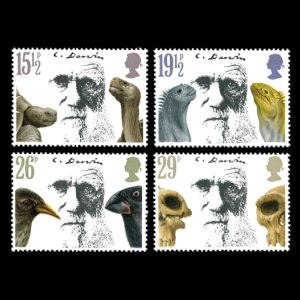 |
 |
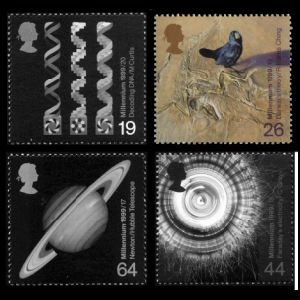 |
| 21.03.2006 "Ice Age animals" | 18.07.2006 "National Portrait Gallery" [3] | 14.10.2008 "Women of Distinction" [4] |
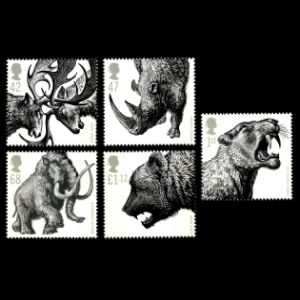 |
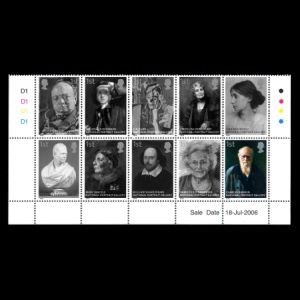 |
 |
| 12.02.2009 "Charles Darwin" | 25.02.2010 "Scientists" [5] | 16.04.2013 "Great Britons" [6] |
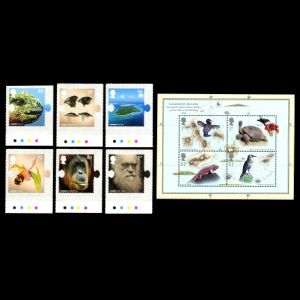 |
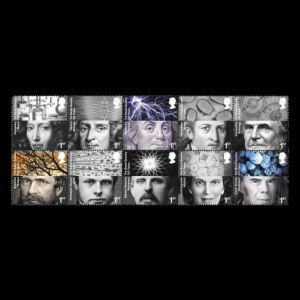 |
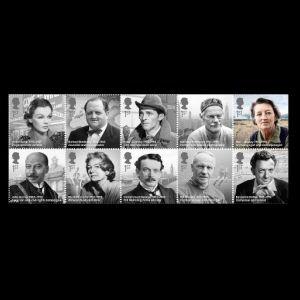 |
| 10.10.2013 "Dinosaurs" | 12.03.2024 "The Age of the Dinosaurs" (part I - prehistoric animals) | 12.03.2024 "The Age of the Dinosaurs" (part II - Marry Anning and her fossils) |
 |
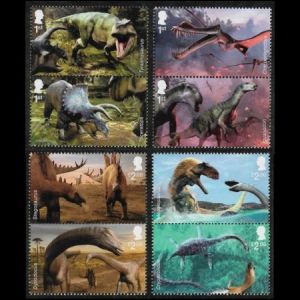 |
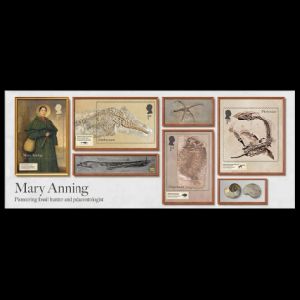 |
Notes:
[1] In August 2008, Royal Mail issued a set of 5 stamps: "150th Anniversary of Dinosaurs' Identification by Sir Richard Owens" in order to commemorate great British paleontologist Sir Richard Owen who defined the world Dinosaur in English language in 1841.
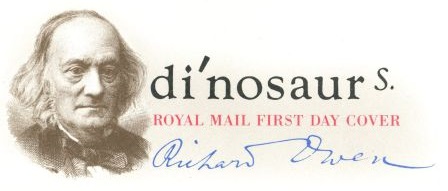 |
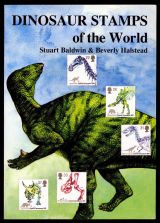 |
| Sir Richard Owen on cachet FDC with "150th Anniversary of Dinosaurs' Identification by Sir Richard Owens" stamps of UK 1991. | Book "Dinosaur stamps of the world", by Stuart Baldwin and Beverly Halstead, published in 1991. |
Dinosaur fossils had been discovered many centuries earlier, but it took the genius of Richard, the best British comparative anatomist of the time, to unlock some of the mysteries of these early finds, which consisted only of odd teeth and bones.
Unfortunately, Sir Richard Owen did not appear on any of the stamps in the set, but was honored with a reproduction of his image as the artwork on the official FDC. [R3]
In the same year, the book “Dinosaur stamps of the world” was published in the UK.
The Bnook tell a story about Dinosaurs and its discovery but ans shows all stamps, miniature and souvenir sheets issued to date.
In 1991 it was still possible to include it all in a relatively small book of 128 pages.
[2] The achievements of Britain's greatest scientists were commemorated by a set of stamps issues in August 1999. Isaac Newton, Michael Faraday, Charles Darwin and the biologists Crick and Watson are the inspiration for the Scientists' Tale collection part of the Royal Mail's Millennium Collection marking 1,000 years of British achievements.
Charles Darwin is honored on other British stamps, including the 26p "Darwin's theory", was designed by the wildlife artist Ray Harris Ching. "Darwin's finch" rest next to a fossil of Archaeopteryx embedded in a limestone matrix.
Darwin's finches (also known as the Galápagos finches) are a group of about fifteen species of passerine birds. They are well known for their remarkable diversity in beak form and function. Two of them are depicted on a stamp from 1982: Cactus Ground Finch and Large Ground Finch
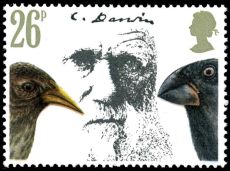 |
| Charles Darwin and finches on stamp of UK 1982, MiNr.: 908, Scott: 967 |
These small sparrow-like birds have a bewildering variety of beak shapes and sizes, and a confusing similarity of plumage.
The explanation for this variety may be that the Galapagos Islands were originally colonized by a finch species from nearby South America.
As with the tortoises and the iguanas, island races or species evolved from isolated populations.
In the finches things seem to have gone a stage further as the various island finches seem to have reinvaded each other's islands leading to competition and further modification to different feeding methods to allow co-existence. [R4]
Archaeopteryx, is a genus of bird-like dinosaur that is transitional between non-avian feathered dinosaurs and modern birds.
Archaeopteryx lived in the Late Jurassic around 150 million years ago, in what is now southern Germany during a time when Europe was an archipelago of islands in a shallow warm tropical sea, much closer to the equator than it is now.
stamps across the world issued in 2009 to commemorate 150th anniversary of the book) and was very strong argument to support his theory.
The fossil depicting on the stamp is the well known Berlin specimen that was was discovered in 1874 or 1875 at the Blumenberg near Eichstätt, Germany and is on show in Natural History Museum in Berlin.
The fossil also has appeared on two German stamps – one in 1973(GDR) and the second in 2011 (FDR). [R5]
[3] The portrait of Charles Darwin shown on stamp on the bottom-right corner. This portrait of Charles Darwin, the great scientist and author of On the Origin of Species, is a copy by the artist of a portrait undertaken by John Collier for the Linnaean Society.
For details please go here.
[4] Marie Charlotte Carmichael Stopes (15 October 1880 – 2 October 1958) was a British author, palaeobotanist and campaigner for eugenics and women's rights.
She made significant contributions to plant palaeontology and coal classification, and was the first female academic on the faculty of the University of Manchester.
With her second husband, Humphrey Verdon Roe, Stopes founded the first birth control clinic in Britain.
Stopes edited the newsletter Birth Control News, which gave explicit practical advice. [R6]
[5] 2010 was the year of the 350th anniversary of The Royal Society, the world's oldest scientific academy in continuous existence.
In celebration, Royal Mail has today released ten 1st class commemoratives featuring significant Royal Society figures whose portraits are paired with dramatic and colourful imagery representing their achievements.
Two figures among the 10 depicted are related to the subject of this website:
-
Evolution: Alfred Russel Wallace,
Wallace (1823 1913) was a British naturalist, explorer, geographer, anthropologist and biologist.
He is best known for independently proposing a theory of natural selection which prompted the joint reading of his and Charles Darwin's papers on evolution in 1858, and spurred Darwin to publish his own theory the following year.
Wallace was one of the leading evolutionary thinkers of the 19th century and made a number of other contributions to the development of evolutionary theory besides being co-discoverer of natural selection.
These included the concept of warning colouration in animals, and the Wallace effect, a hypothesis on how natural selection could contribute to speciation by encouraging the development of barriers against hybridization.
He also invented the science of Biogeography – which studies the geographic distribution of organisms. [R7] -
Earth Sciences: Sir Nicholas Shackleton,
Sir Nicholas John Shackleton was a British geologist and climatologist who specialised in the Quaternary Period.
He was the son of the distinguished field geologist Robert Millner Shackleton and great-nephew of the explorer Ernest Shackleton.
In 1967 Cambridge awarded him a PhD degree, for his thesis entitled 'The Measurement of Paleotemperatures in the Quaternary Era'.
Shackleton was a key figure in the field of palaeoceanography, publishing over two hundred scientific papers.
He was a pioneer in the use of mass spectrometry to determine changes in climate as recorded in the oxygen isotope composition of calcareous microfossils.
He also found evidence that the Earth's last magnetic field reversal was 780,000 years ago. [R8]
[6] Following in the distinguished footsteps of Eminent Britons in 2009 and Britons of Distinction in 2012, the Royal Mail was delighted to introduce the Great Britons Special issue, celebrating the anniversaries of ten more people who not only achieved greatness in their lifetimes, but also left behind a lasting legacy.
One of the persons who is commemorated on these stamps is Mary Leakey (6 February 1913 - 9 December 1996) - an eminent archaeologist and anthropologist, Leakey's discoveries were so significant that they forced scientists to radically change many long-held views about human evolution.
Mary Leakey discovered the first fossilized Proconsul skull, an extinct ape now believed to be ancestral to humans.
She also discovered the robust Zinjanthropus skull at Olduvai Gorge.
For much of her career Mary Leakey worked together with her husband, Louis Leakey, in Olduvai Gorge, uncovering the tools and fossils of ancient hominids.
She developed a system for classifying the stone tools found at Olduvai.
Mary Leakey also discovered the Laetoli footprints. It was here, at the Laetoli site, that she discovered Hominin fossils that were more than 3.75 million-years-old.
Mary Leakey also discovered fifteen new species of other animals, and one new genus.
In 1960 she became director of excavation at Olduvai and subsequently took it over, building her own staff. After the death of her husband, she became a leading palaeoanthropologist, helping to establish the Leakey tradition in the field.
Mary Leakey died on 9 December 1996 at the age of 83, a renowned paleoanthropologist, who had not only conducted significant research of her own, but had been invaluable to the research careers of her husband, Louis Leakey, and their sons, Richard, Philip, and Jonathan. [R9]
Official stamps of private post companies of the United Kingdom related to Paleontology and Paleoanthorology: Charles Darwin
| 2015 (?) "Down House" [LN1] | ||
 |
|
|
Notes:
[LN1] Down House stamp collection.
It is a part of exclusive range of "English Heritage" Stamps, these stamps highlight some our famous properties throughout England.
This stamps can be used to send postcards overseas from the UK, worldwide excluding UK and Channel Islands.
 |
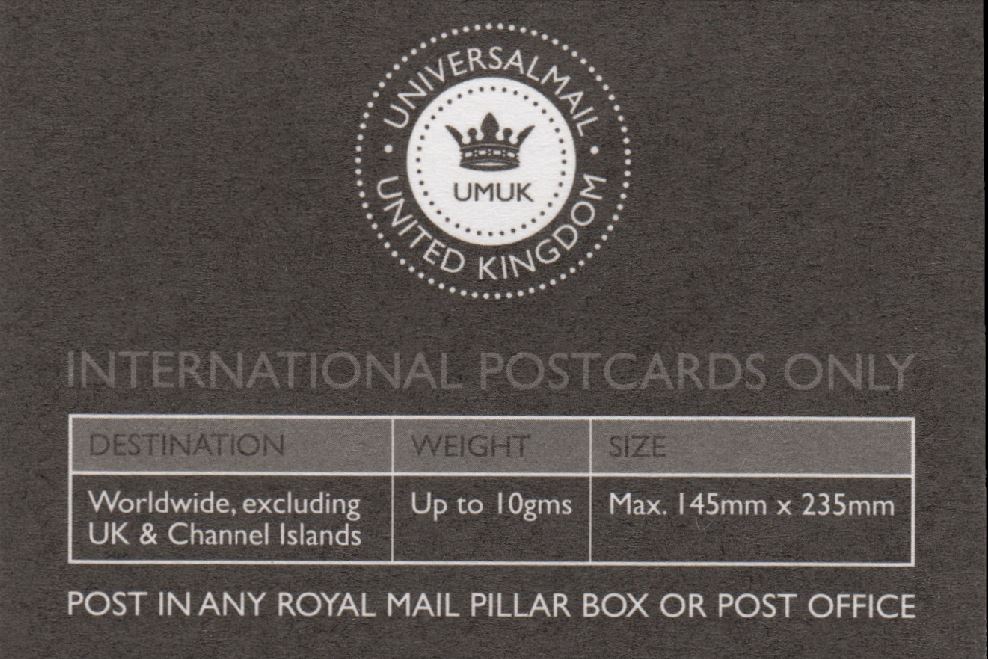 |
| Charles Darwin and his home in Down House on stamp and postcard of English Heritage company of UK 2015. | |
English Heritage is the custodian of over 400 historic monuments, buildings and sites. Though these they bring the story of England so life for over 10 million visitors each year. A contribution from sale of their producs, including postage stamps, help them to secure this spectacular and unique heritage for future generations to enjoy.
This booklet of five self-adhesive stamps is dedicated to Charles Darwin and his home in Down House.Down House is the former home of the English naturalist Charles Darwin and his family.
It was in this house and garden that Darwin worked on his theories of evolution by natural selection which he had conceived in London before moving to Down. [R4]
Some other stamps of the United Kingdom to considery: contributors to Paleontology science, fossil found places, Natural History Museum
| 16.02.1972 "British Polar explorers" [O1] | 14.01.1981 Booklet with definitive stamps [O2] | 19.03.2002 "Coastal landscapes" [O3] |
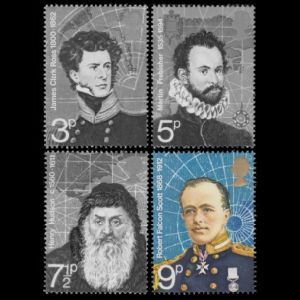 |
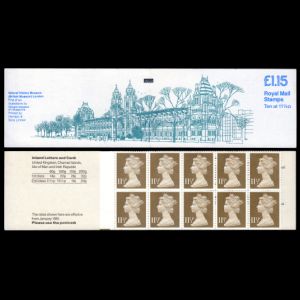 |
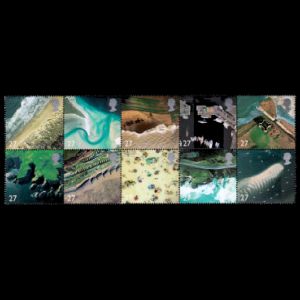 |
| 29.04.2003 "Extreme achievements in the 20th century" [O1] | 17.01.2017 "Prehistory and early history of Britain" [O4] | 14.01.2021 "National Parks" |
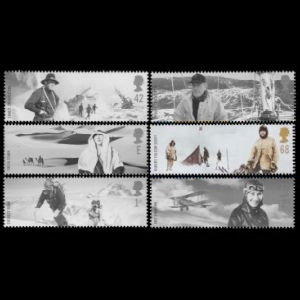 |
 |

|
Notes:
[O1] Robert Falcon Scott shwon on one stamp from the set.
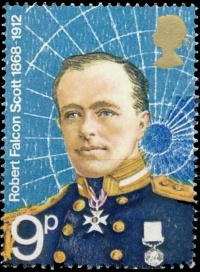
|
| Robert Falcon Scott on stamps of UK 1972, MiNr.: 593, Scott: 667 |
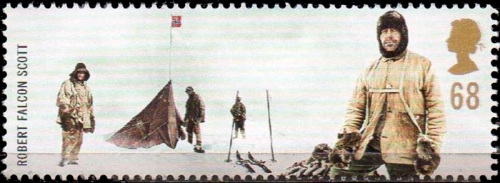
|
| Robert Falcon Scott on stamps of UK 2003, MiNr.: 2109, Scott: 2123 |
Robert Falcon Scott CVO (6 June 1868 – 29 March 1912) was a Royal Navy officer and explorer who led two expeditions to the Antarctic regions: the Discovery expedition of 1901–1904 and the ill-fated Terra Nova expedition of 1910–1912.
Scott and his companions died on the second expedition. [R10]
When Scott and his party's bodies were discovered, 16kg of Glossopteris tree (an extinct beech-like tree from 250 million years ago) fossils from Queen Maud Mountains found next to their bodies, which they had dragged on hand sledges.
These fossils promised to Marie Stopes (shown on UK stamp in 2008) to provide an evidence for Eduard Suess's who suggested Antarctica had once been part of an ancient super-continent named Gondwanaland (now Gondwana).
More details are here.
[O2] Building of Natural History Museum in London shown on the cover of the booklet.
[O3] Some fossil found places shown on the stamps.
[O4] The stamps set shows various scenes from a live of early Britons from a glimpse of Stone Age ritual of 11,000 years ago, through the Bronze Age and into the Iron Age of some 300 BC. All humans depicted there are of modern human species - Homo sapiens sapiens.
Commemorative postmarks and meter franking of the United Kingdom related to Paleontology: reconstructions and fossils of dinosaurs and other prehistoric animals, paleontologists, paleoanthropologist, Charles Darwin
Legend is here| 1966 "Museum and art gallery" [Sp] [PM1] | 1974 "1200th anniversary of Lyme Regis Dorset" [Sp] | 1978 "Geology in Swansea" [Sp] |

|
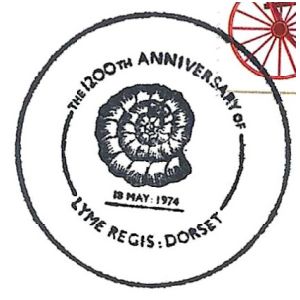
|
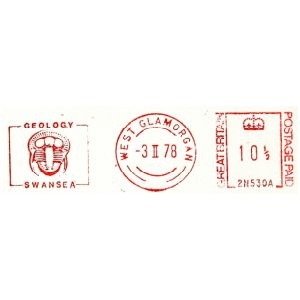
|
| 1983 "Imperial college London, department of Geology" [PM] | 24.01.1988 "Whitby salutes Australias Bicentenary" [Sp] [PM2] | 1988 "Irish Geology week" [Sp] |
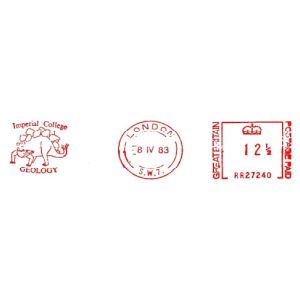
|
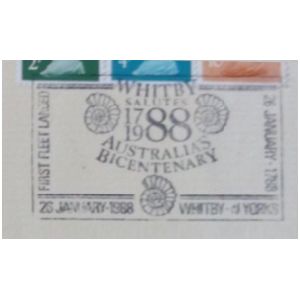
|
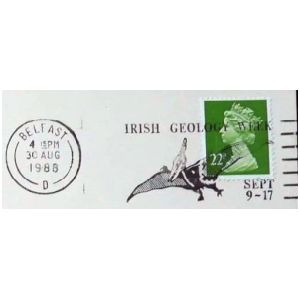
|
| 20.08.1991 "150th Anniversary of Dinosaurs' Identification by Sir Richard Owens" [FDC] [1] | 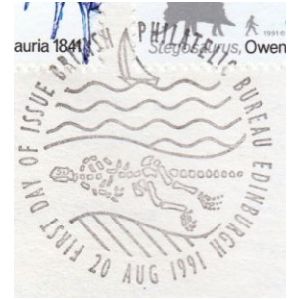
|
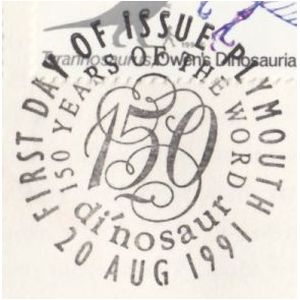
|
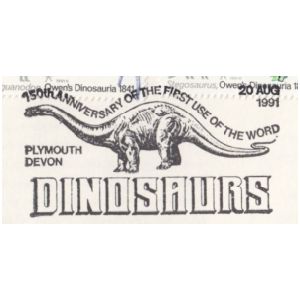
|
| 20.08.1991 "150th Anniversary of Dinosaurs' Identification by Sir Richard Owens" [FDC] [1] | ||
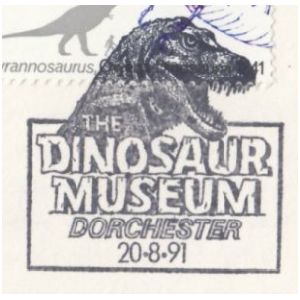
|
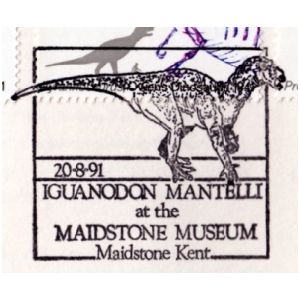
|
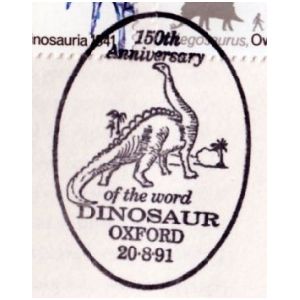
|
| 20.08.1991 "150th Anniversary of Dinosaurs' Identification by Sir Richard Owens" [FDC] [1] | 15.10.1991 "Autumn Stampex/BPE" [Sp] | |
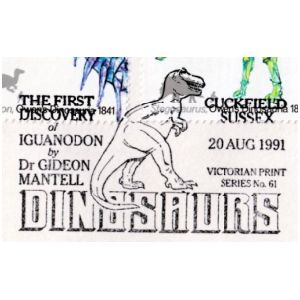
|
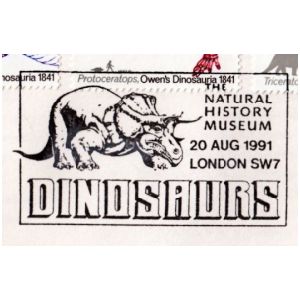 |
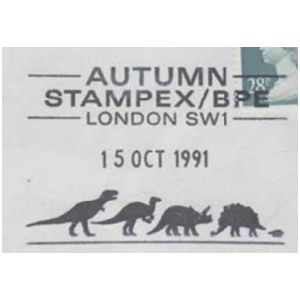 |
| 1992 "Mammoths and the Ice Age exhibition in National Museum of Wales" [Sp] | 1993 "Prehistoric sea monsters in National Museum of Wales" [Sp] | 03.08.1999 "Millenium" [FDC] [2] - |
 |
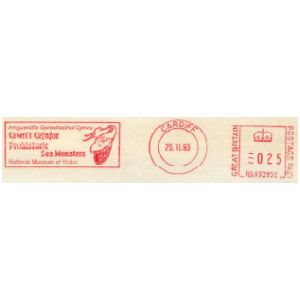 |
 |
| 03.08.1999 "Millenium"
[FDC] [2] - |
||
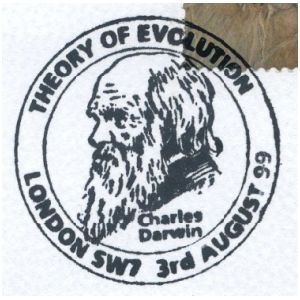 |
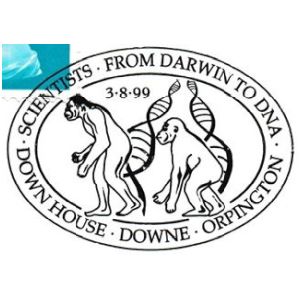
|
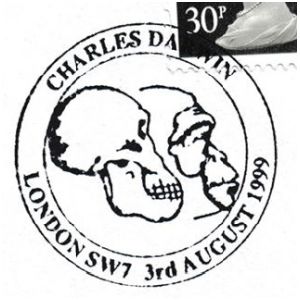 |
| 03.10.2000 "The oldest Body and bones on Earth" [FDC] | 16.09.2004 "Wooland animals" [Sp] | 21.03.2006 "Ice Age animals" [FDC] |
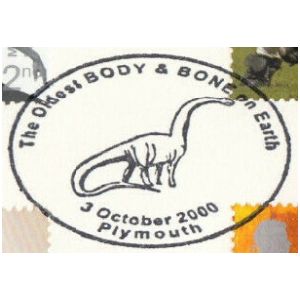 |
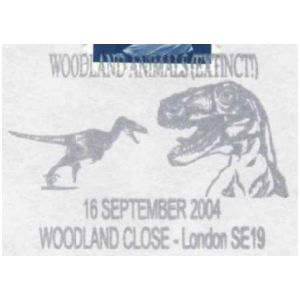 |
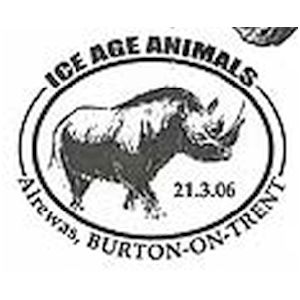 |
| 21.03.2006 "Ice Age animals" [FDC] | ||
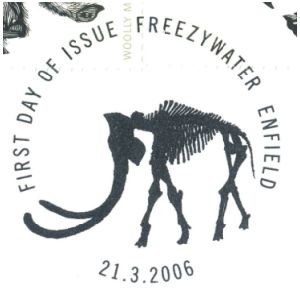 |
 |
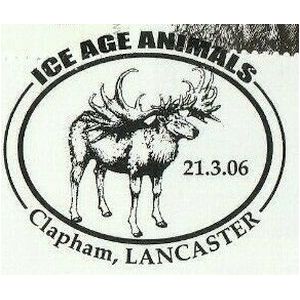 |
| 21.03.2006 "Ice Age animals" [FDC] | ||
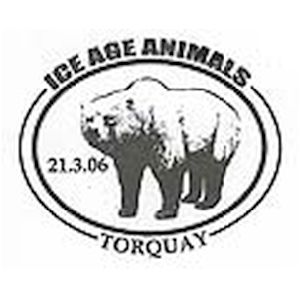 |
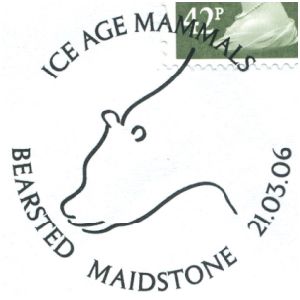 |
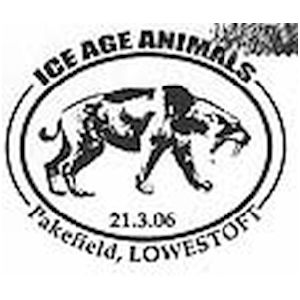 |
| 21.03.2006 "Ice Age animals" [FDC] | ||
 |
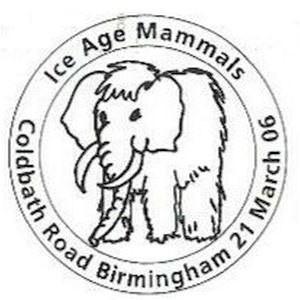 |
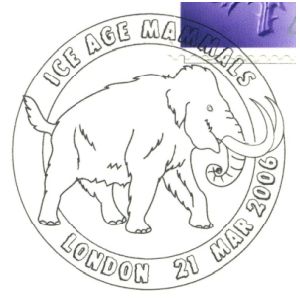 |
| 21.03.2006 "Ice Age animals" [FDC] | 12.02.2009 "Charles Darwin" [FDC] | |
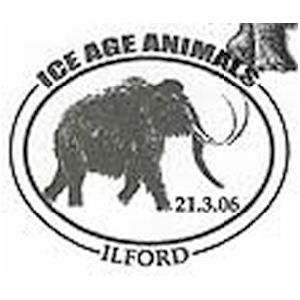 |
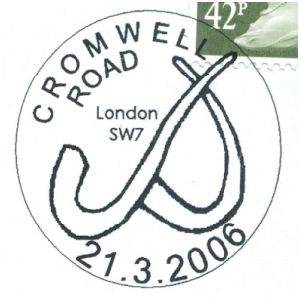 |
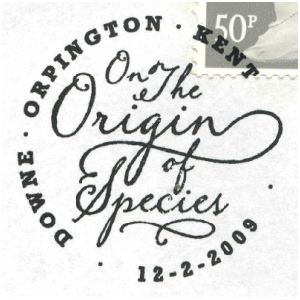 |
| 12.02.2009 "Charles Darwin" [FDC] | ||
 |
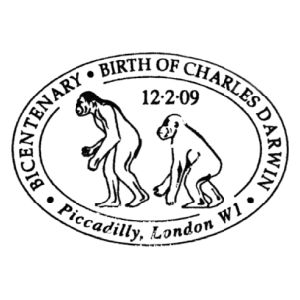 |
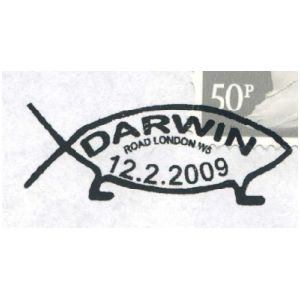 |
| 12.02.2009 "Charles Darwin" [FDC] | ||
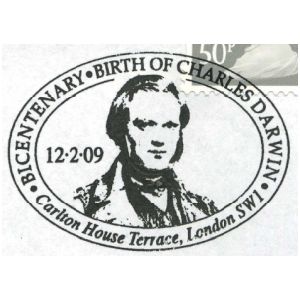 |
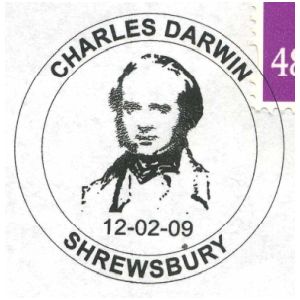 |
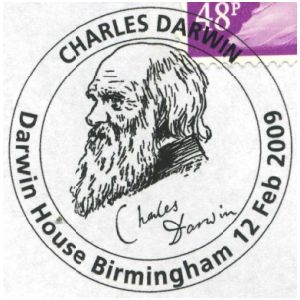 |
| 12.02.2009 "Charles Darwin" [FDC] | 10.10.2013 "Dinosaurs" [FDC] | |
 |
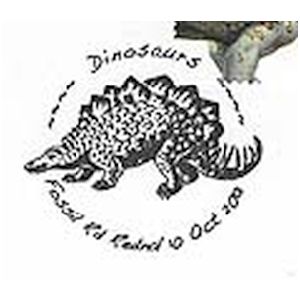 |
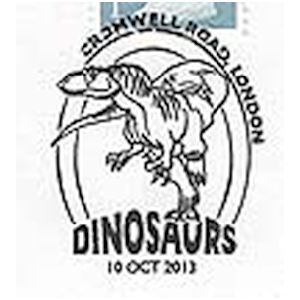 |
| 10.10.2013 "Dinosaurs" [FDC] | ||
 |
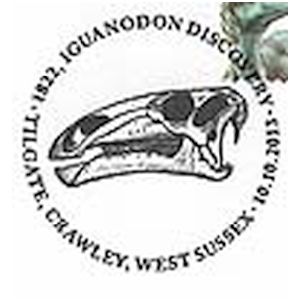 |
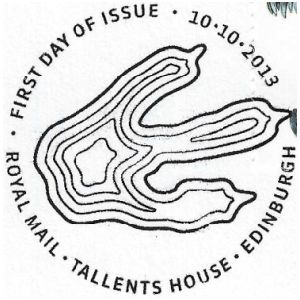 |
| 10.10.2013 "Dinosaurs" [FDC] | ||
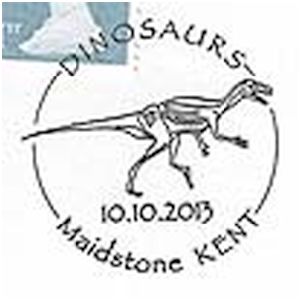 |
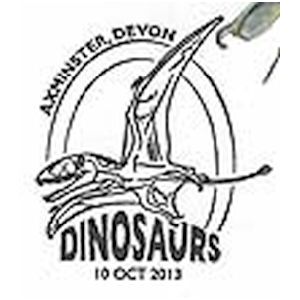 |
|
| 12.03.2024 "The Age of the Dinosaurs" [FDC] | ||
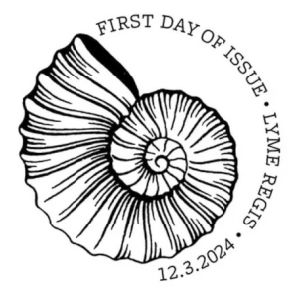 |
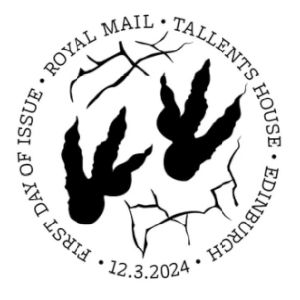 |
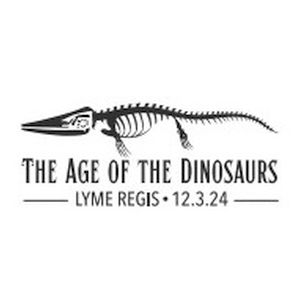 |
| 12.03.2024 "The Age of the Dinosaurs" [FDC] | ||
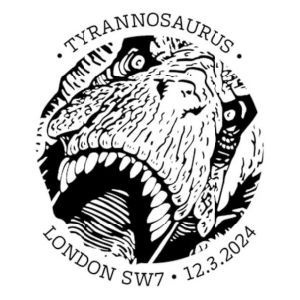 |
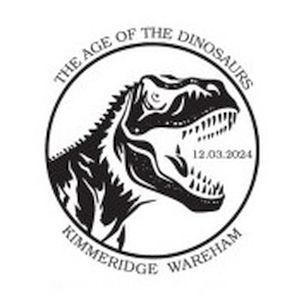 |
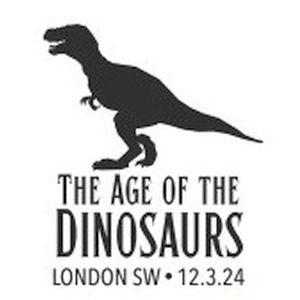 |
| 12.03.2024 "The Age of the Dinosaurs" [FDC] | 05.04.2024 - "Jurassic Coast" [Sp] | |
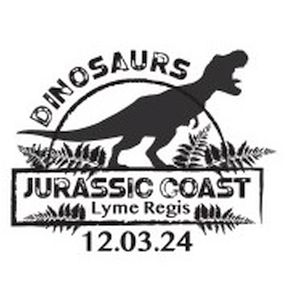 |
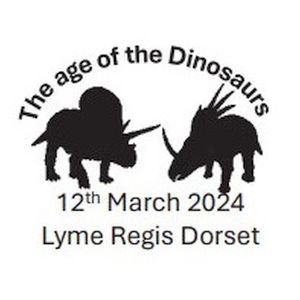 |
 |
Notes:
[PM1] The meter franking from Great Britain Birmingham 1966 showing a Skull of Homo sapiens and a stone tool probably a handaxe or a Neanderthal man Mousterian tool - Museum and Art Gallery
[PM2] Three Ammonites were depicted on the postmark "Whitby salutes Australia's Bicentenary".
Whitby is a seaside town, port and civil parish in North Yorkshire, England with a population of about fourteen thousand people. Since the seventh century the Ammonites, available in large quantities at Whitby were interpreted as "snakestones".
In early Christian times, snakes had a bad reputation and were associated with the Devil, so it was important
to clear the area before a sacred building could be established.
According to legend, Saint Hilda cast a spell that turned the snakes of Whitby to stone and threw them from
the cliff tops.
says Dr. Paul Taylor from Natural History Museum in London.
For more details about the postmark and depicted ammonites, please click here.
 |
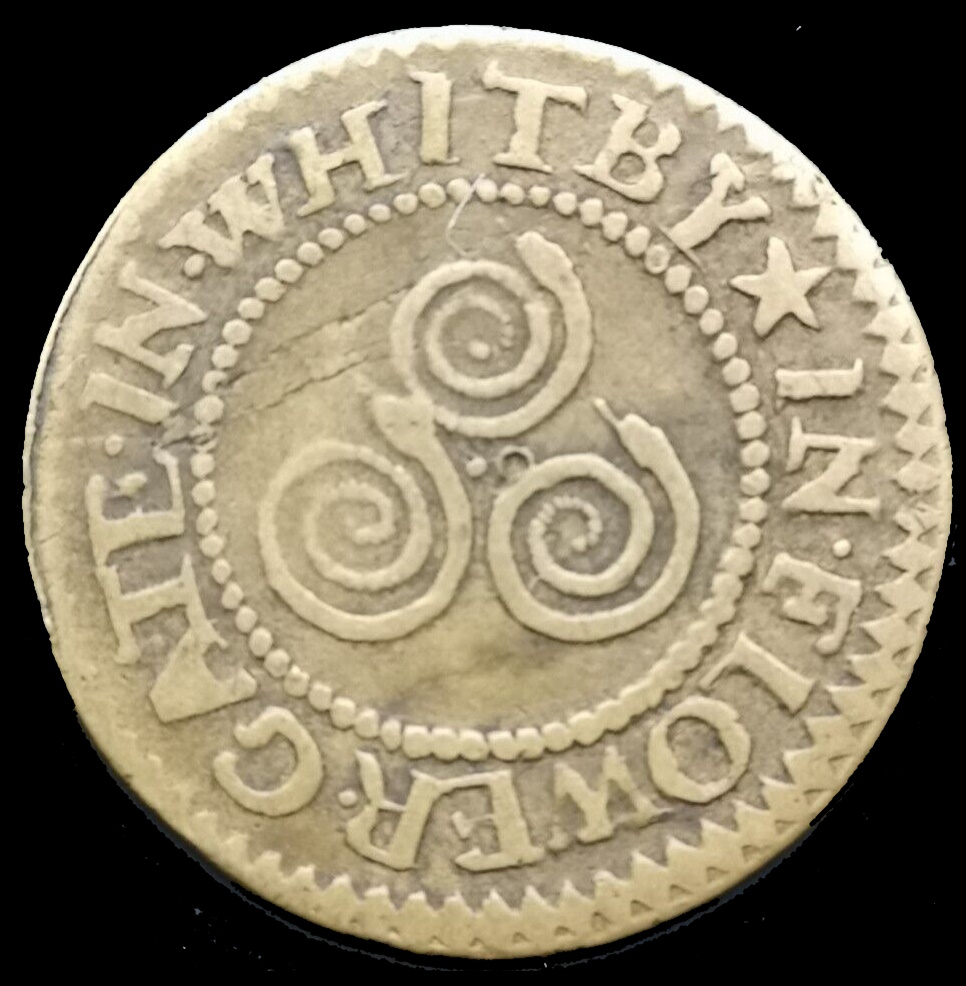 |
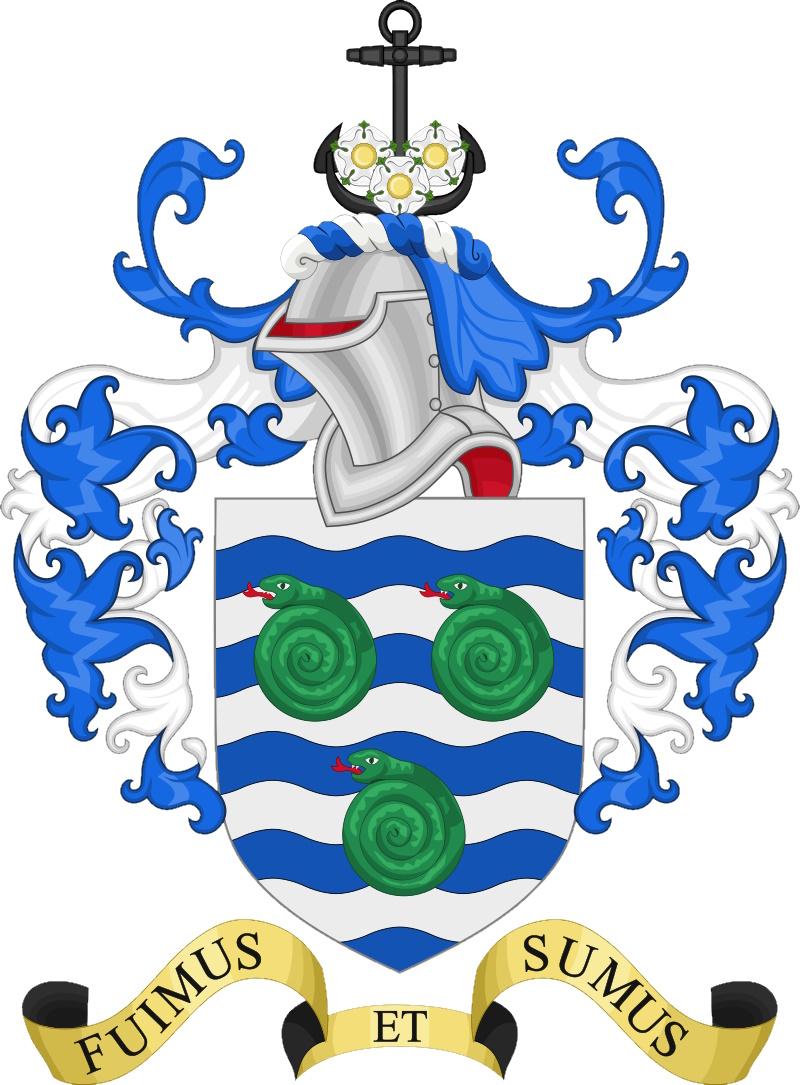 |
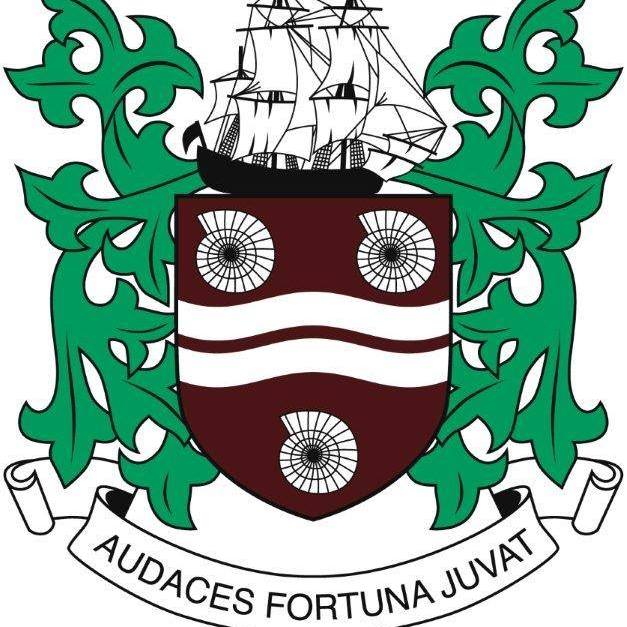 |
| Snakestone of Whitby. Image credit: the Natural History Museum in London | Snakestone of Whitby on English token from 1667 | Coat of Arm of Whitby | Coat of Arm Rugby club of Whitby |
Some other postmarks and meter franking of United Kingdom to consider: slogans, Natural History Museums, contributors to Paleontology and Paleoanthropology, HMS Beagle
Legend is here| 1958 "Centenary of Darwin and Wallace Evolution theory" [Sp] | 1981 "British Museum (Natural History)" [Sp] | 10.02.1982 "Charles Darwin" [FDC] |
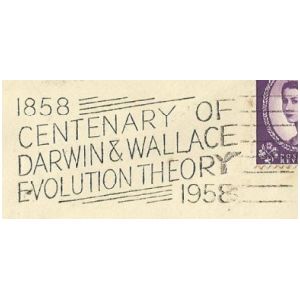
|
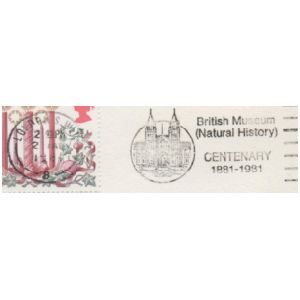
|
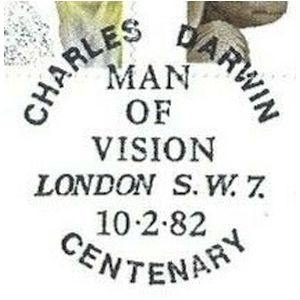
|
| 10.02.1982 "Charles Darwin" [FDC] | ||
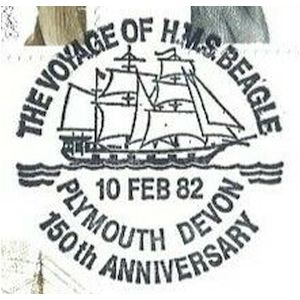
|
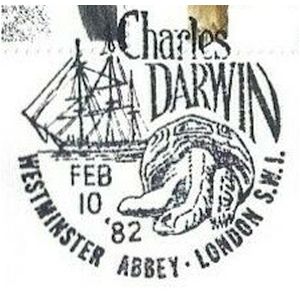
|
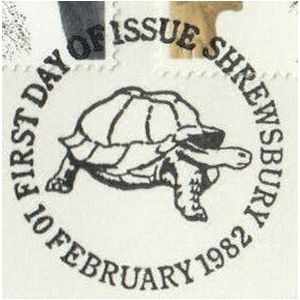
|
| 10.02.1982 "Charles Darwin" [FDC] | ||
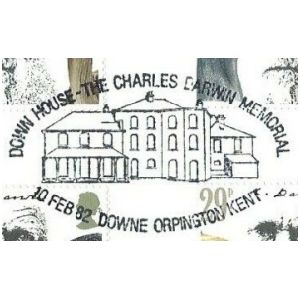
|
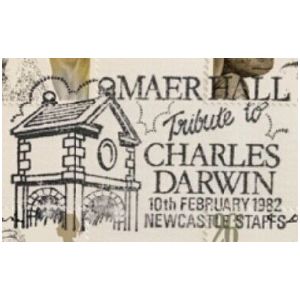
|
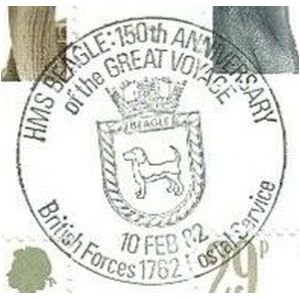
|
| 10.02.1982 "Charles Darwin" [FDC] | ||

|
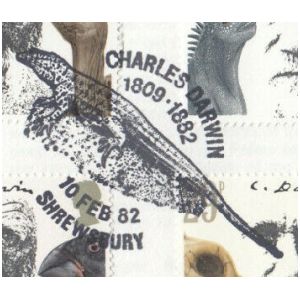
|
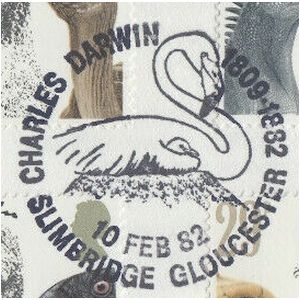
|
| 10.02.1982 "Charles Darwin" [FDC] | 12.03.1981 "British Museum (Natural History)" [FDC] | |
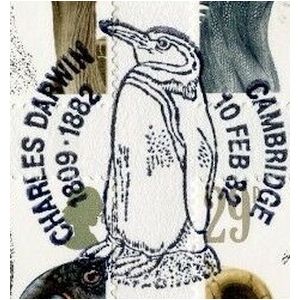
|
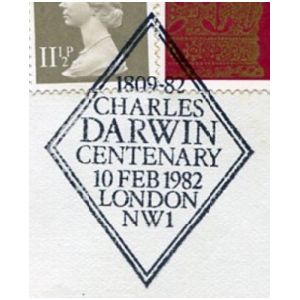
|
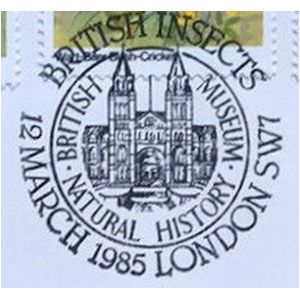
|
| 1988 - 1989 Exhibition of Chinese Dinosaurs in Natural History Museum in London[Sp] | 1989 "Dinosaurs Exhibition in Natural History Museum in London" [PM] | 20.08.1991 "150th Anniversary of Dinosaurs' Identification by Sir Richard Owens" [FDC] [PMO1] |

|
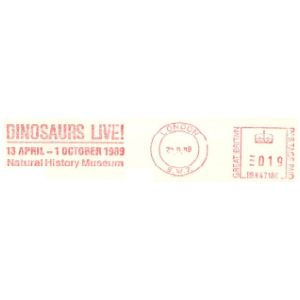
|

|
| 29.04.2003 "Extreme endeavours - Robert Falcon Scott" [O1] [FDC] | 12.02.2009 "Charles Darwin" [FDC] | |
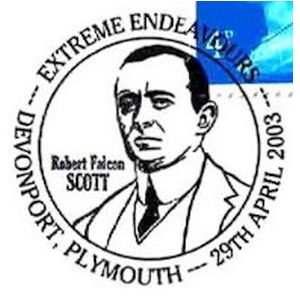 |
|
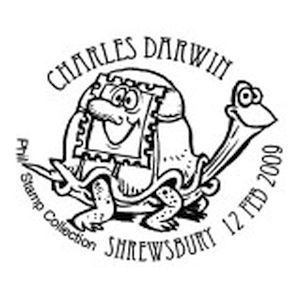 |
| 12.02.2009 "Charles Darwin" [FDC] | ||

|

|

|
| 12.02.2009 "Charles Darwin" [FDC] | ||

|

|

|
| 25.02.2010 "Scientists - Alfred Russel Wallace" [5] [FDC] | 02.02.2012 "The age of the Windsors and Saxe-Coburg Gotha - Scott of the Antarctic" [O1] [Sp] | 17.01.2017 "Prehistory and early history of Britain" [O4] [FDC] |
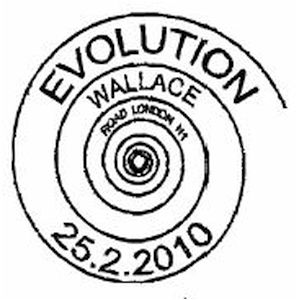 |
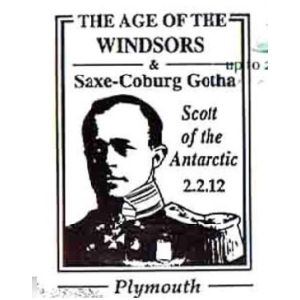 |
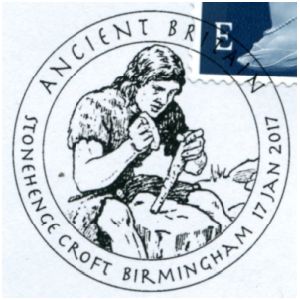
|
Notes:
[PMO1] The Lochness Monster on postmark of UK 1991.
The Loch Ness Monster, or Nessie, is a cryptid in cryptozoology and Scottish folklore that is said to inhabit Loch Ness in the Scottish Highlands. It is often described as large, long-necked, similar to Plesiosaurus.
Popular interest and belief in the creature have varied since it was brought to worldwide attention in 1933.
Evidence of its existence is anecdotal, with a number of disputed photographs and sonar readings.
The scientific community regards the Loch Ness Monster as a phenomenon without biological basis, explaining sightings as hoaxes, wishful thinking, and the misidentification of mundane objects. [R11]
Historical Paleontology-related Letters
References:
- [R1] United Kingdom: Wikipedia WikiTravel FlagCounter
- [R2] Postal History and Philately of United Kingdom:
Wikipedia,
The British Postal Museum & Archive,
Britain’s local stamps,
Links to official website of the Post Authority, stamp catalog and a list of new stamps of United Kingdom are here - [R3] Sir Richard Owen: Wikipedia
- [R4] Charles Darwin: Wikipedia
- [R5] Archaeopteryx: Wikipedia, Archaeopteryx on stamps.
- [R6] Marie Charlotte Carmichael Stopes: Wikipedia
- [R7] Alfred Russel Wallace: Wikipedia
- [R8] Sir Nicholas Shackleton: Wikipedia
- [R9] Mary Leakey: Wikipedia
- [R10] Robert Falcon Scott: Wikipedia
- [R11] Loch Ness Monster: Wikipedia
Acknowledgements: many thanks to Dr. Peter Voice from Department of Geological and Environmental Sciences, Western Michigan University, for reviewing the draft page and his valuable comments.
| << previous country | back to index | next country >> |
